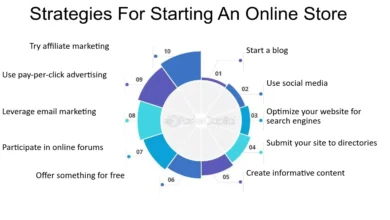How to Write an International Business Plan

Expanding your business to international markets can be one of the most rewarding and complex moves an entrepreneur or company can make. To increase your chances of success, a comprehensive international business plan is essential. Unlike domestic plans, an international plan must account for differences in market dynamics, cultural expectations, legal frameworks, logistics, and foreign currency management. In this article, we will walk you through the steps to writing a practical and compelling international business plan that prepares your business for cross-border success. Visit this website for professional guidance and help.
1. Executive Summary with Global Outlook
Begin with a powerful executive summary tailored for international investors, partners, or institutions. Summarize your global business goals, the countries you plan to operate in, the problem your product/service solves internationally, and how your solution fits the global market. Keep it concise but rich in strategic vision.
2. Define Your International Business Objectives
State clearly what you want to achieve by going international. Are you aiming for market share, brand recognition, cost reduction, or resource access? These objectives will influence everything from your market entry strategy to marketing plans and should be specific, measurable, achievable, relevant, and time-bound (SMART).
3. Conduct Comprehensive Market Research
This is one of the most critical components of your plan. Research your target countries’ market size, customer needs, local competition, purchasing power, and cultural behaviors. Use reliable data sources and try to include region-specific insights. You’ll also want to consider the political and economic stability of each region to assess market risk.
4. Develop an International Marketing Strategy
Your marketing plan must be adapted for each target region. This includes branding, advertising, sales channels, social media, and even packaging design. Consider cultural sensitivity, language translation, and local customer preferences. Identify how you will position your product and what pricing strategies you will use to remain competitive without sacrificing margins.
5. Entry and Expansion Strategy
Explain how you plan to enter and grow in your chosen markets. Common entry strategies include joint ventures, franchising, exporting, licensing, or direct investment. Your strategy should match your resources, risk tolerance, and long-term goals. Clearly explain your timeline, roll-out phases, and projected outcomes in each market.
6. Organizational and Legal Structure
Outline your company’s legal structure and how it will operate internationally. Will you establish foreign subsidiaries or partnerships? What are the legal and regulatory requirements in each country? Also, define the leadership and operational structure that will support your international efforts, including whether you’ll use local teams or a centralized system.
7. Supply Chain and Logistics
Discuss how you’ll manage inventory, shipping, customs, warehousing, and distribution in each market. Address how you will maintain product quality and delivery timelines. This section should also explore relationships with international suppliers, freight partners, and local vendors.
8. International Financial Projections
Your plan must include detailed financial forecasts for each region. This includes projected income statements, cash flow, balance sheets, and break-even analyses. Consider currency fluctuations, tax implications, tariffs, and duties. Explain your pricing model and include a funding plan if you require external capital to scale globally.
Read Also: Efficient Lead Filtering: The Key to Targeted Real Estate Marketing
9. Risk Management and Contingency Plans
Identify the major risks involved in expanding internationally—political instability, legal issues, currency volatility, cultural missteps, and market entry failures. Provide mitigation strategies and contingency plans to show preparedness and build confidence in your approach.
10. Monitoring and Performance Metrics
Define how you will measure the success of your international expansion. Outline KPIs for market share, revenue, customer acquisition, cost-efficiency, and brand penetration. Include systems or tools you’ll use for ongoing tracking, reporting, and decision-making.
Conclusion
Writing an international business plan is both a strategic and operational challenge, but it is essential for successful cross-border expansion. It requires an understanding of global markets, localized strategies, risk planning, and financial management. By investing time in a comprehensive international business plan, you position your company to enter new markets confidently, attract global investors, and build long-term international success.





